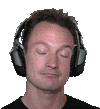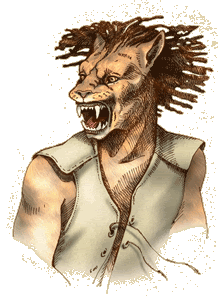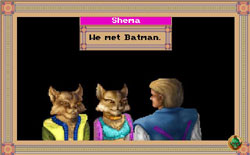- Joined
- Jan 28, 2011
- Messages
- 100,143















Tags: Chris Avellone; Obsidian Entertainment; Project Eternity; Torment: Tides of Numenera
Chris Avellone gave a nice big interview to PC Gamer at GDC today. The first part of the interview is kind of an extended Project Eternity progress report with some additional information about the setting, while in the second part Chris talks a bit about his expected role on Torment: Tides of Numenera, among other things. Have a snippet:
PC Gamer will also have an interview with Brian Fargo next week, so stay tuned.
Chris Avellone gave a nice big interview to PC Gamer at GDC today. The first part of the interview is kind of an extended Project Eternity progress report with some additional information about the setting, while in the second part Chris talks a bit about his expected role on Torment: Tides of Numenera, among other things. Have a snippet:
Alright, now that that’s out of the way, let’s just start with, how’s the development of Project Eternity going? Where are you guys on that?
It’s going pretty good. We are still in pre-production for the project. And that means, like, we’re figuring out all the level design pipelines, the narrative pipelines. What we want to make sure is we do our due diligence before we hit the production phase, and we understand how all the pieces go from start to finish. Because you want to do that before you add a bunch of designers onto the project. If you don’t have those pipelines figured out first, it just causes a lot of problems with iteration for everybody.
So, along those lines, we did an update yesterday that sort of gave the run-down of where our first prototype is. And that’s sort of proving out all our [highest] priority systems, in terms of, “Hey, here’s how combat feels. Here’s how navigation feels in the environment. Here’s how you control the entire party.” Basic door movement, dungeon exploration. And then we’re actually planning to do a second prototype later on that sort of does the [lower] priority elements. For things like, when we want to do new conversational aspects, a little bit more about the crafting and merchant systems. But we wanted to make sure to get the solid, core gameplay down first, so that it felt right. Everyone at the studio had a chance to play it, give feedback on it, then move on from there.
In terms of the storyline stuff, we’re still working on the lore. We’re doing a variety of sort of one-pagers, and multiple takes of the storyline and world from just about every designer that’s working on the game. And what we do is, we’ve been reviewing each of those pitches that each individual designer has done, and say, “Hey, you know, there’s some particular strength to this, individual storyline. We like the characters here, the protagonist here, the antagonist here. Why don’t we see how we can blend these elements together and make a stronger storyline overall.” Having multiple designers do their take on the story has actually been pretty cool.
Speaking of the story, how does the process work when you’ve got so much writing to fill in all the little cracks of this big, open world?
Eternity has been different from our other projects. With our other projects, we haven’t had quite the luxury to have this sort of process. So generally, on our previous projects, a project director would sort of set up the overall vision for the game. In terms of, here’s the overall mechanics I’m looking for. Here’s the overall feel that I want the player to have. And then what we call a creative lead kind of holds the torch for the storyline. What he’ll do is do a few takes on the storyline, let everyone in the studio offer feedback on that particular storyline, and then we iterate on that until we feel solid about it.
And then we divide that story up into chunks amongst the designers. “Hey, you develop this area and these characters. You develop this companion, you develop that companion.” On Eternity, it’s been a little different because Josh Sawyer set up the vision, the feel he’s looking for, and then every designer had a chance to sort of do their own take on what the storyline was like, and we picked and chose from there. Even Josh did a take on the storyline, as well. So it’s been a lot different, and we’re really enjoying the process.
Let’s talk Numenera really quick. If you are brought on to the project [with the $3.5 million stretch goal], what would your role be?
It’s two-fold. One part is, I will be reviewing all of the design documentation that the project develops. Kevin Saunders is the project lead, Colin McComb is the lead designer. And what I would do is review all of their documentation, offer feedback, give whatever critiques, if there are any, both positive and negative. And then I’ll just reinforce, you know, “Hey, here are some of the goals we were going for in the original [Planescape] Torment, here are some positive things you guys are doing that I think are hitting the mark, and here are some other things that you might want to consider incorporating.”
The other thing that I would be doing, is that I should have a chance to write the eighth companion for the game. And that would be a lot like what I did for previous Obsidian titles, and Black Isle, in the sense that… when we did Mask of the Betrayer at Obsidian, I wrote Gann and Kaelyn the Dove. And I think Kevin and George really liked what I did with those two characters. So I would be doing one additional character, much like that, for Numenera.
How early were you talking with the guys at inXile about doing a new Torment game? I know a lot of people in the community were asking after those first few blog posts from Brian Fargo about bringing the name back, like, “Where’s Chris Avellone?”
The time frame was… not long after Brian realized that he could get the name, and he actually purchased the name for Torment, then he talked to me about it, and whether or not I would be interested in working on the project. But at the time, between Wasteland 2 and Eternity, there wasn’t any time for me to do that. And occasionally, Brian would follow up with me and see what my situation was, and if things might work out.
Then Wasteland 2 finished up, and my time freed up a great deal more. Then Brian and Kevin started talking to me and Feargus [Urquhart, Obsidian CEO], not necessarily about my time, but just about ways we could work together. And I think that between Kevin and Brian, they were able to break out a reasonable schedule for me to work on the project with Feargus. And Feargus was pretty comfortable with that. So he was like, “Hey, if you really do want to work on this..” And I did! But that didn’t happen until a few days before the stretch goal announcement. Before that, I thought there would be no chance I’d be able to do it.
PC Gamer will also have an interview with Brian Fargo next week, so stay tuned.










![Have Many Potato [2013] Codex 2013](/forums/smiles/campaign_tags/campaign_potato2013.png)
![The Year of Incline [2014] Codex 2014](/forums/smiles/campaign_tags/campaign_incline2014.png)



![Glory to Codexia! [2012] Codex 2012](/forums/smiles/campaign_tags/campaign_slushfund2012.png)


















